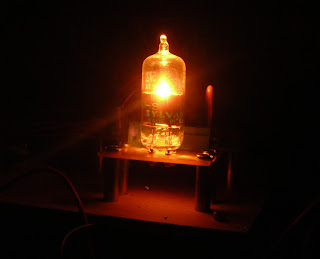
This project involved mounting to Ammeters into a used army surplus 50 Caliber ammo box. This was done provide a secure home for the vintage panel mount meters and wound up looking very cool. Sitting by themselves the meters don't represent a finished usable tool because they are fragile and hard to work with. The ammo can is steel and has a rubber gasket on the lid. It makes a stable and sturdy home for the meters, "weaponizing" them, as it were. ;)
In order to mount the meters I bought a 2 and 1/4" holesaw from J & L Industrial supply for approximately $13.00 USD. The ammo box runs around $8.00 online and I took the banana jacks out of inventory.
I divided the side of the ammobox into thirds with a grease pen and mounted the meters halfway up the side. The mounting holes had to be cleaned up with a deburring tool, and once the meters fit snuggly inside, I used them as a template for the mounting screws. The single piece banana jacks are done by drilling two holes and filing the holes together to make the proper profile.

Then the only task was to connect the studs on the meters to the studs on the banana jacks. I did this with crimp connectors as you can see above. According to the pruduction standards set forth by my father, the connectors have been covered with heat shink. Two pieces are used, a little one that slips over the wire, and a larger piece that covers the connector. The little piece is used because if you try and make the larger piece shrink all the way down the wire it will tear itself on the connector.

















